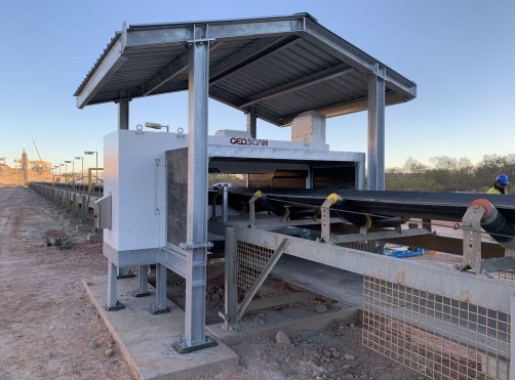The recent 16th AusIMM Mill Operators’ Conference, in Perth, Western Australia, saw Newmont share details of some of the sensing technologies it is deploying at its operations to improve sustainability and processing plant outcomes.
In a presentation titled, ‘Redefining the Battery Limits of Processing Plants – Improving Sustainability through the Deployment of Sensing Technologies,’ the paper authors (Futcher, W, Seaman, D, and Kelin, B) showcased the implementation of MineSense’s ShovelSense XRF (X-ray Fluorescence) technology at its Red Chris mine in British Columbia, Canada.
The technology, which is mounted on shovels operating in the open pit, allows for real-time grade estimation of every scoop of material, enabling immediate separation of ore and waste, Newmont says. It provides a much higher resolution of measurement (approximately 16-25 times) than conventional grade control systems, the miner added.
“The system accumulates the grade loaded into each truck,” Newmont said. “If the resulting material classification is different to that expected from grade control, the truck is diverted to a new destination.”
Some of the key statistics for a 12-month period the authors shared from the Red Chris implementation were 1.6 Mt of ore recovered from material classified as waste in traditional grade control; 825,000 t of waste removed from the ore stream; a 0.40 reduction in tonnes of waste per tonne of ore recovered; and an 800 hour XRF head service life, with most heads reaching the expected service life before failure.
In addition to mentions of ShovelSense, the authors also shared details on how Newmont is leveraging belt scanning technology equipped with Prompt Gamma Neutron Activation Analysis on the conveyor system after crushing at three operations. To illustrate this, the company shared an image of a Scantech International GEOSCAN unit.
Newmont said: “This technology measures key ore properties before ore reaches the mill, providing vital data such as estimated ore hardness and tailings neutralisation potential. Integration with the process plant control system allows for feed-forward control and optimisation.”
In block caving, the scanners can be used to track drawpoint grades and enable bulk ore sorting methods, Newmont added.











